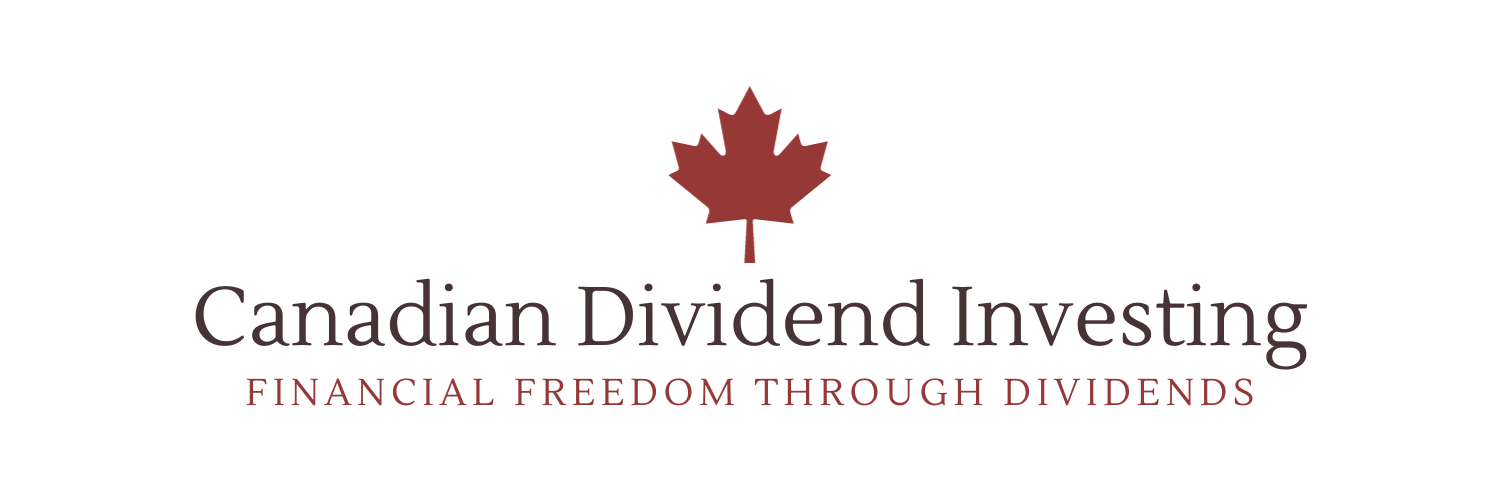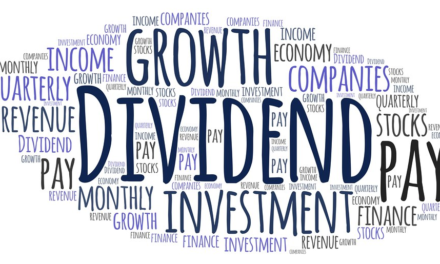These days pretty much the only thing that keeps me up at night is worrying about the dreaded dividend cut.
Even though I’ve taken numerous steps to avoid such a fate, it’s still a worry. Run all the Monte Carlo simulations you want, the fact is I only have one shot at this early retirement thing, and dividend cuts are the biggest risk. The last thing I want is to be going back to work as some 50-something failed early retiree with a ten-year resume gap. That’s probably not going to go well in interviews.
I avoid dividend cuts by doing the following:
- Reinvesting a portion of my dividends into new shares
- Pivoting my portfolio slightly to better balance current yield and dividend growth
- Avoiding companies with ultra-high payout ratios
- Selling a company when there are legit worries about its dividend, even if the stock has declined
So far these rules have worked pretty well, but I’m the first to admit I’ve only begun what will be a long journey. Let’s face it; if I’m investing for another 40+ years there’s no way I’ll be able to fully avoid a dividend cut. In fact, there will probably be a few. They’re unavoidable. But I can take certain steps to avoid them.
Today’s post will profile three Canadian dividend stocks that look poised to deliver a dividend cut. But first, let’s take a closer look at steps you can take to avoid such a fate in your own portfolio.
How to avoid a dividend cut before it happens
They say an ounce of prevention is worth a pound of cure, which is especially true in the investing world.
Thus, the easiest way to avoid a dividend cut is to avoid dicey situations in the first place.
This comes with a big problem, however. Often, the most attractive stocks are cheap because their earnings are temporarily depressed. This automatically creates doubt surrounding the dividend. This is often the exact wrong time to sell. We should be buying stocks when they fall, not selling. Yet the average investor often does the exact opposite.
A falling stock doesn’t necessarily mean a dividend cut is coming. We must look deeper. Check out the company’s cash flow and see if it is generating enough cash to cover the dividend. That’s the true test of a dividend’s sustainability.
The good news is a company usually doesn’t go from comfortably paying the dividend to cutting it in just a quarter or two. It usually happens in slow motion, as earnings deteriorate for years before the dividend is cut. That gives the company lots of time to get out of its funk. Most do, in fact. Don’t listen to the naysayers; dividend cuts are quite rare.
A company’s cash flow can be temporarily depressed without the risk of a dividend cut, especially if they have a strong balance sheet. Many companies are willing to temporarily fund their dividends by issuing debt.
Basically, it comes down to this. You can usually predict a dividend cut by looking at:
- Weak, usually shrinking earnings over a number of years
- A subpar balance sheet; and
- A high payout ratio
The payout can usually survive for a while if you have one of the three, and it can temporarily survive two of three. But eventually reality catches up with it and the inevitable happens.
Unfortunately, this is an inexact science. It’s impossible to predict a dividend cut with 100% accuracy. The best we can do are educated guesses, meaning that any list of this nature will inevitably get some wrong.
Now that we’ve taken a closer look at how to predict a dividend cut, let’s check out a few real-life examples. Here are three Canadian stocks that may cut their dividends.
Subscribe to our newsletter today!
Fiera Capital

Fiera Capital (TSX:FSZ) is a Montreal-based asset manager with more than $150B in assets under management. It has diversified the business away from managing high-fee mutual funds for retail investors to an asset manager investing in things like private equity and private markets for institutional clients.
The company grew smartly in the 2010s, acquiring many smaller competitors. This came with good economics; a new asset manager could be brought into the fold easily, since a fund’s assets are mostly intangible. They came with attractive valuations, too. Unfortunately, Fiera largely paid for these deals with debt while paying a large dividend, leaving its balance sheet in poor shape.
Wealth management is a competitive business, and Fiera has suffered from fee compression for years. Combine that with a tough market in 2022 and inflation causing its fixed expenses to increase, and it ultimately hurt Fiera’s profitability. Adjusted earnings — which ignored large depreciation expenses from acquisitions — fell steadily in both 2022 and 2023 before recovering slightly at the end of 2023.
Trailing adjusted earnings fell from $1.78 per share at the end of 2021 to $1.05 per share after the third quarter of 2023. This improved slightly to $1.21 per share at the end of 2023, but the trend is obvious. The current dividend is $0.86 per share. The payout ratio increased from less than 50% of adjusted earnings to more than 80% of adjusted earnings. That trend is not a dividend investor’s friend.
Combine that with the overall deterioration of the business, and I think a dividend cut is inevitable.
Artis REIT

Artis REIT (TSX:AX.un) is a diversified owner of office, retail, industrial, and residential real estate. Its portfolio spans 119 properties and almost 14M square feet of gross leasable space. Approximately 60% of the portfolio is located in the United States, with the remaining 40% in Western Canada. The company’s largest asset is office space; some 50% of net operating income comes from offices.
Starting in 2022, Artis started down a somewhat unique path. Management was frustrated with the trust’s low price compared to its net asset value, so they decided to do something about it. Artis sold assets, using the proceeds to repurchase what management thought were underpriced shares. A couple of years later, and Artis has made serious headway with this plan — approximately 30% of the portfolio has been sold, the share count has fallen by some 7%, and debt is down.
Unfortunately, there are a few issues with the approach. Artis is keen to sell its retail and industrial assets and keep its office space. Most investors want it to do the exact opposite. Its office assets are largely smaller buildings located in secondary markets. They’re not trophy assets by any means. In other words, the market views the plan as selling off the good stuff and keeping the junk.
The company’s earnings are also collapsing. Artis earned $0.94 per share in adjusted funds from operations (AFFO) in 2022. In 2023 it earned just $0.63 per share in AFFO. The payout ratio went from 64% to 95% in just a year.
Artis also has odd investments in other REITs. It has a large stake in Dream Office REIT, doubling down on its large office bet. It also has a preferred stake in Cominar REIT. These stakes are worth something, but Dream’s recent distribution cut means less cash is going to Artis.
In short, Artis is telling investors it would rather repurchase shares than pay its generous 9.7% dividend. It’s hard to say whether the share buyback plan will work — your author was optimistic, but his opinion has soured — but one thing is for sure — Artis’s distribution is on thin ice. I’d expect management announce a dividend cut — possibly to zero — to free up capital to put towards the precious buyback.
Related: How professional investors value REITs
Northview Residential REIT
Northview Residential REIT (TSX:NRR.un) is the owner of nearly 15,000 apartments and execusuites spanning 11 provinces and territories. It specializes in so-called secondary markets in Canada’s north, places that are highly cyclical based on commodity prices.
Older investors might remember Northview from the 2010s, when it was a steady performer on the Toronto Stock Exchange. It was purchased by private equity in 2020. The new owners then spun out part of the company back to investors. These days, Northview combined with other apartment operators to create the new iteration of the company.
Your author also has fond memories of the stock as I held it for years, sold on the news of the acquisition, and then played the merger arbitrage when the market assumed the deal would collapse amid the market chaos in 2020.
Unfortunately, the new version of Northview has too much debt. Most REITs strive for 50% debt-to-assets ratio, with many operating under that number. Northview’s debt-to-assets ratio is considerably higher. It also struggled with variable rate debt in 2023, although most of that debt has now been locked in.
In fact, the recent transaction to combine with other apartment operators was largely done to help get debt under control. Northview used stock to pay for apartments with a lower debt-to-assets ratio than it had. At its peak, Northview’s debt-to-assets ratio was 70%. These days it’s closer to 65%, still too high.
Northview must get that debt under control, and the easiest way to do so is to cut its generous 7.5%+ dividend. Sure, it could raise equity, but with shares trading at approximately 8x earnings it wouldn’t be a popular move. Besides, raising equity means even more cash heading out the door via the distribution.
Bonus: A few companies not at risk of a dividend cut
As a bonus, let’s take a quick look at a few companies that appear at risk of a dividend cut which are actually in much better shape than they first appear. Remember, like I said above, it takes years for a company to go from a reliable dividend payer to cutting the dividend, and these companies have only begun their walk down that ominous path. Their situation could further deteriorate but will most likely improve over time.
BCE – BCE (TSX:BCE) currently doesn’t earn enough in free cash flow to cover its generous 7%+ dividend. That’s causing a lot of people to question the sustainability of the payout. But the company also spends billions each year in capex, which can be ratcheted down if needed. It also has millions of customers paying dependently each month and decades of experience squeezing fees out of those customers. I’m optimistic over time.
IGM Financial – IGM Financial (TSX:IGM) is famous for being the parent of Investors Group, a very 20th century wealth manager. But IGM has pivoted of late, making large investments in things like insurance giant Great-West Life, fintech darling Wealthsimple, and China’s largest asset manager. Its 6%+ yield is safe.
Slate Grocery REIT – Slate Grocery REIT (TSX:SGR.un) is often on these lists, likely because it pays a 10%+ yield. But the payout ratio was 80% of funds from operations in 2023, a very manageable number. Slate also posted strong lease spreads last year, which should translate into additional earnings in 2024.



